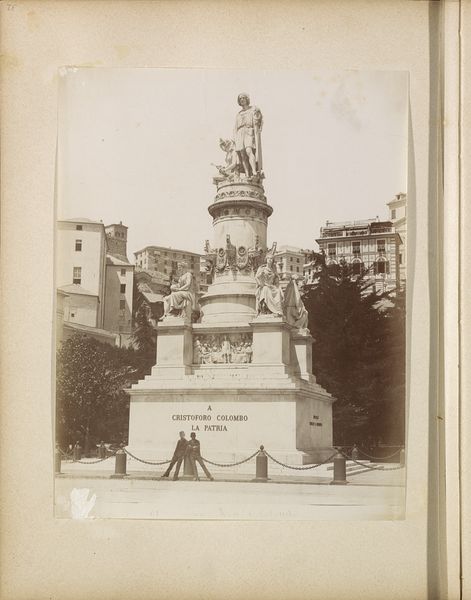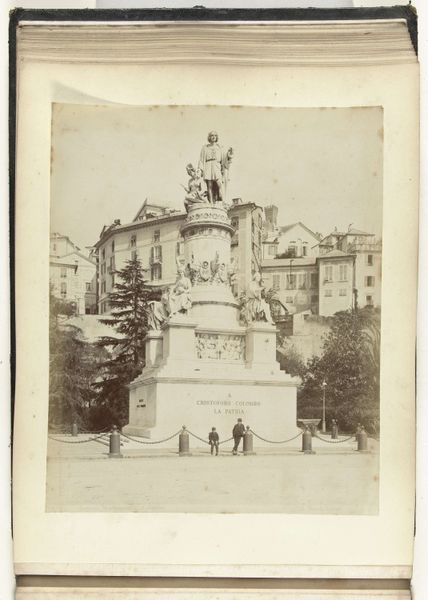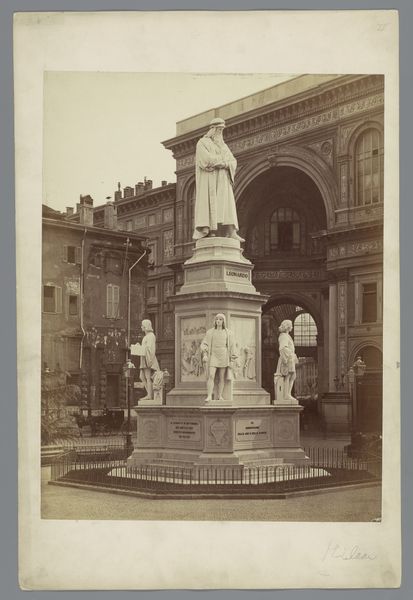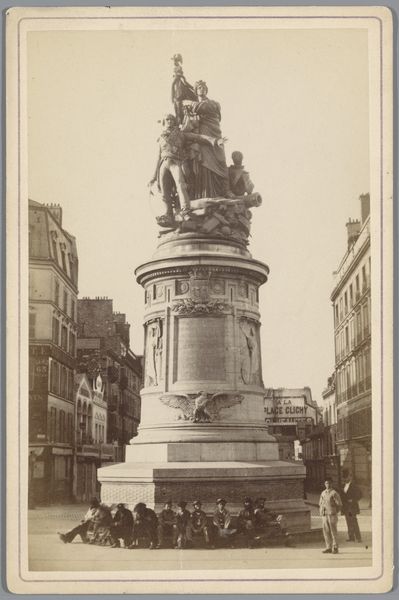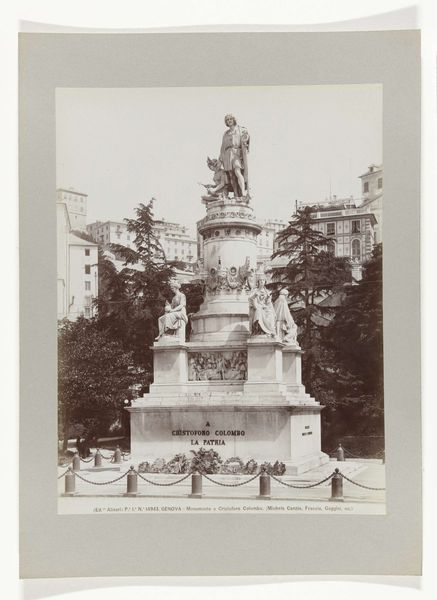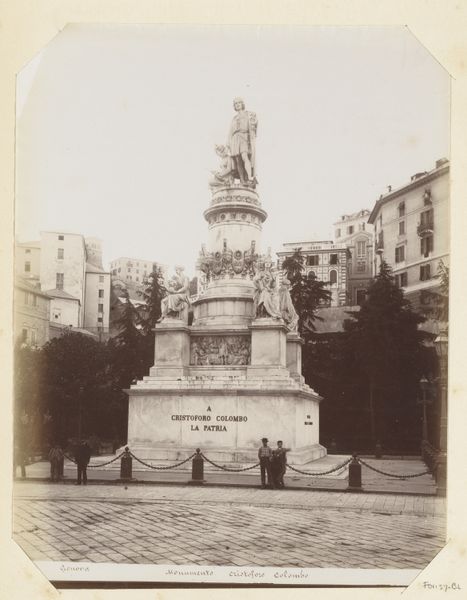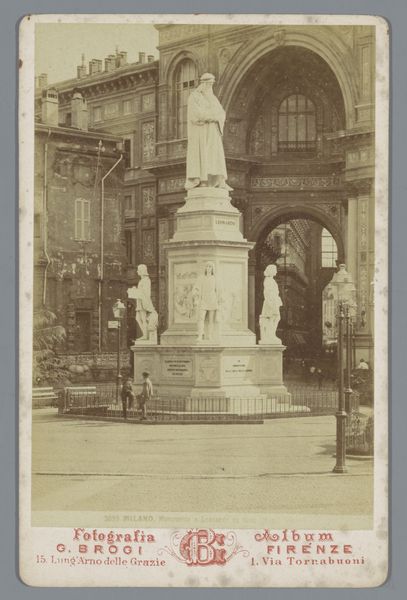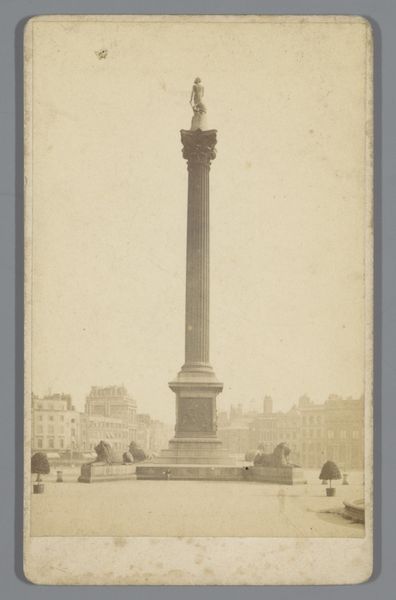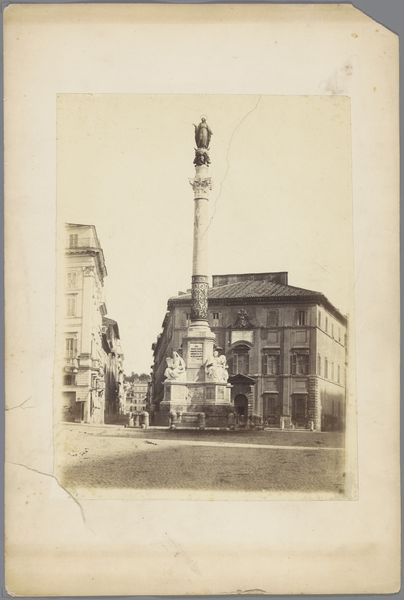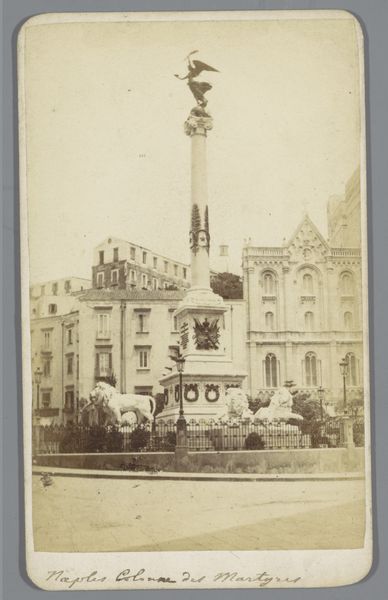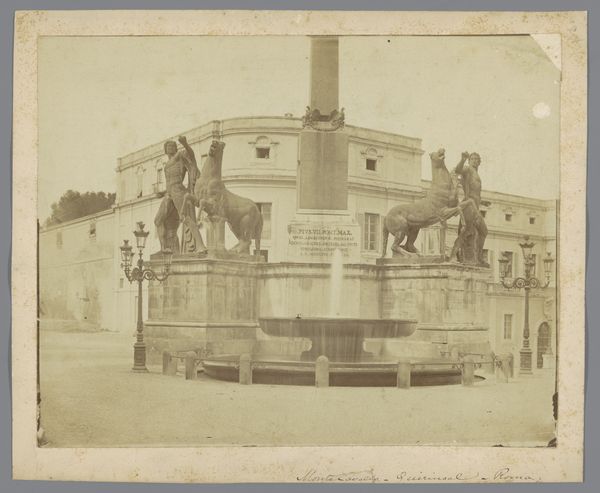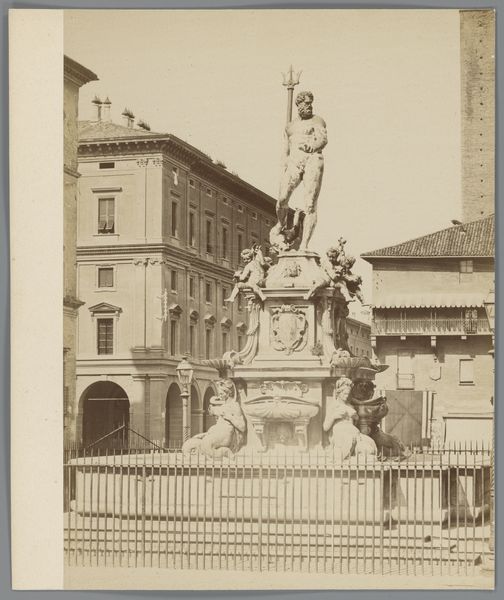
Dimensions: height 104 mm, width 63 mm
Copyright: Rijks Museum: Open Domain
Editor: We're looking at a photograph titled "Monument voor Christoffel Columbus in Genua," created sometime between 1855 and 1885 by C. Hodcend. It depicts a towering monument to Christopher Columbus. The architectural detail and classical style evoke a sense of civic pride. What do you see when you look at it? Curator: I see the confluence of art, politics, and history. This photograph captures a specific moment in the cultural memory of Columbus, doesn't it? It represents more than just a monument; it’s an assertion of national identity. Think about when this was made - the late 19th century was a period of intense nationalism, so this is, in effect, a public performance of that identity. Editor: A public performance, that's interesting! So the placement of this monument and even photographing it become part of how a city sees itself? Curator: Exactly! Monuments aren't just aesthetic objects; they are deeply intertwined with political power. Ask yourself, who commissioned it, and why? The very act of erecting this monument is a political statement about Genoa's role in history. Furthermore, how is Columbus framed here, in the Neoclassical style which dominated much of 19th Century Public Art? Is it glorifying an act of conquest, or emphasizing another historical role? The chain link fence itself looks as though it attempts to cordon off that uncomfortable context. Editor: I hadn't thought about it that way. It’s more complex than just a statue. The monument projects ideals about national identity, and by photographing it, it’s like a second layer of emphasizing this idealized national history. Curator: Precisely. The act of capturing and distributing this image is itself a deliberate act. Think about the audience, who it would reach, and what it was intended to signify within a broader social and cultural context. Editor: So this photograph documents more than a statue, it captures a moment in a city’s ongoing construction of its identity. I’ll never look at monuments the same way. Curator: That’s the hope - to encourage us to see the layers of meaning and power embedded in these public displays.
Comments
No comments
Be the first to comment and join the conversation on the ultimate creative platform.
